The Cayman Islands Society of Human Resources Professionals held its biggest annual conference yet on Thursday, 9 May, and Friday, 10 May, 2013 at The Ritz-Carlton, Grand Cayman.
The Society’s 10th annual conference, themed ‘HR Unlocked: What you didn’t know you need to know’, was held for the first time over two days instead of one.
The conference speakers, who came from Cayman and abroad, focused on a wide variety of HR topics, including recruiting young – ‘Gen Y’ – professionals; workplace bullying, best practices in social media, workplace flexibility and art of developing leadership talent. The conference also featured a ‘marketplace’ with 21 booths set up by organisations that could offer assistance to HR professions in one way or another.
In the welcoming address, conference co-chair Chris Bailey said there were a number of HR issues involving topics like technology, social media and wellness that were constantly evolving so it was important for HR professionals to stay up to date with the best practices on those issues.
Jackie Myles, the other conference co-chair, thanked the sponsors of the event and particularly BritCay, which stepped up as the headline sponsor.
HR competencies
After Society President Ahisha Bodden made an address to members, the first guest speaker, Martha Ramirez, gave a presentation about the efforts of the Society for Human Resource Management – a US-based international HR association for which she works – to develop an HR professional competency model.
“The competency model’s goal is to identify and focus on the knowledge and behaviours needed to be successful in HR at all stages of one’s career,” she said.
In developing its model, SHRM – which is pronounced ‘shurm’ by HR professionals, looked at more than 100 other existing models, Ms Ramirez said, noting that while those models all included knowledge, skills and attributes as key aspects, behaviours weren’t and that was considered a needed aspect of the mode.
“That was sort of the missing link,” she said.
In surveying HR professionals while developing the competency model, Ms Ramirez said SHRM learned that ethical practice – something that wasn’t initially considered to be a part of the model – was highly stressed as something that also needed to be included.
She said that SHRM’s goals were to advance and serve the HR profession and developing the competency model was a part of that goal. However, she said businesses needed to know if it drives performance.
“If you can’t link the model with performance, it really doesn’t have a good use.”
SHRM’s HR competency model was developed in 2011 and is in the process of being refined, she said.
“It’s a work in progress, but it’s in a good enough place that we’ve rolled it out and people are actually using it.”
Ms Martinez said that one of the interesting things that was learned by surveys and research is that there is very little variation in the competencies required for HR professionals at various stages of their career, regardless of the size of their organisation or their business sector.
Workplace flexibility
On the second day of the conference, Ms Ramirez presented again, but this time on workplace flexibility, something that is seen as an imperative for business success and HR leadership going forward.
Ms Ramirez spoke about the benefits and caveats of flexible work arrangements, such as telecommuting and phased retirement.
She said 75 per cent of workers say they don’t have enough time for their children, 63 per cent don’t have enough time for their spouses and 60 per cent don’t have enough time for themselves – all increases from past surveys.
Workplace flexibility makes employees happier, more productive and engaged. It helps with recruitment and retention, and it helps companies’ bottom line due to the high cost of recruiting and training new employees when old ones leave.
A major challenge to instituting flex-work is organisational resistance, Ms Ramirez said. Keys to implementing a successful flex-work strategy are communicating clear guidelines, keeping track of before/after performance metrics, and listening to employees’ feedback. She gave examples of success stories from small, mid-sized and large businesses.
“There’s a solution out there for each company,” Ms Ramirez said.
Social media
Also speaking on the second day of the conference was US social media expert Laurie Ruettimann, who talked about technology and the future of human resources.
She advised the audience to start putting money away now to buy a good phone or tablet device because in the near future human resources work will be done on mobile devices, using cloud computing and “software as a service” as opposed to using desktop computers with on-site physical memory and applications installed on a hard drive.
Saying that social media is the future of human resources, Ms Ruettimann said popular sites like Facebook, LinkedIn and Twitter have been around for about a decade now and are actually pretty traditional.

